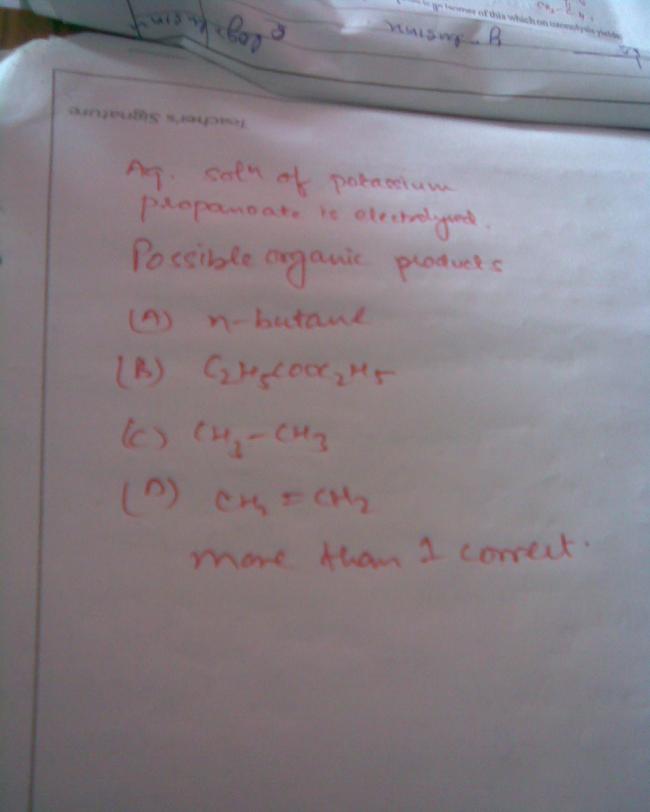answer kya hai..
13 Answers
(a) (b)
and agar jabardasti banana ho to sab ban jaega...
actually...
ratio of (a)>(b)>>>(c)>(d)
CH3-CH2. radical can take H. from H-CH2-CH2...
Or it can take H. from H2O or from formed Butane...
so CH3-CH3 is formed...
and if it was taekn from H-CH2-CH2...(very small amount..) then .CH2-CH2. is formed resulting in CH2=CH2.. very very small amount..
becos
C2H5COOK CAN GIVE THE C2H5CO2-,AND THE FREE RADICAL C2H5
C2H5CO2- GIVES C2H5CO2 (FREE RADICAL) AND AN ELECTRON
THE FREE RADICAL C2H5CO2 AND C2H5 COMBINE TO GIVE C2H5COOC2H5
AND THE FREE RADICAL 2C2H5 CAN GIVE N BUTANE AND IT UNDERGOES INTERMOLECULAR HYDROGENATION TO GIVE C2H6 AND ETHENE
richa i have confirmed my ans with arihant organic .There also same explanation given.
priyam is not absolutely rite dat is the thing wat i am saying,becos ethene and ethane is formed majorly by intermolecular hydrogenation.He has left dat one.
 more than one correct
more than one correct